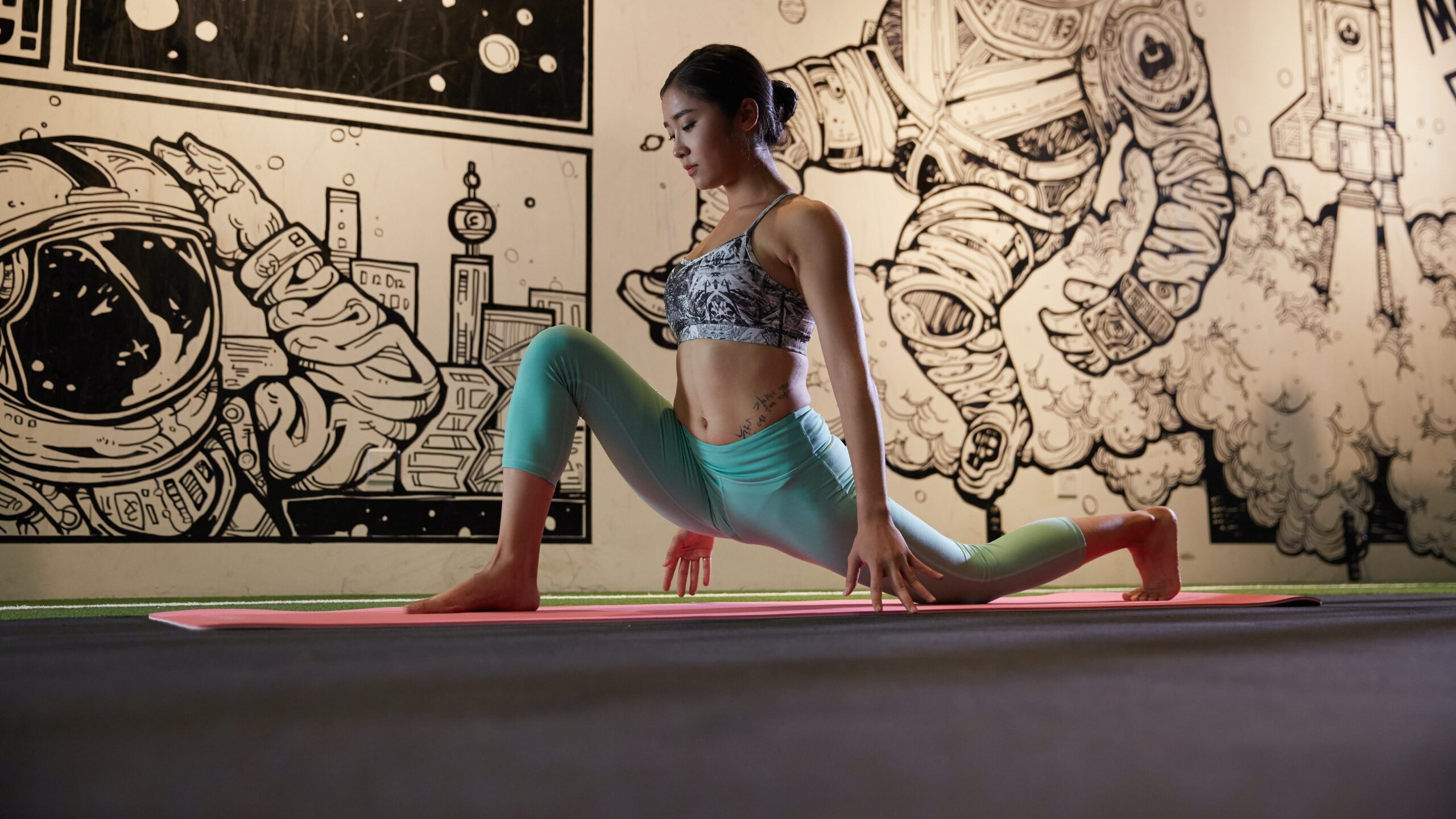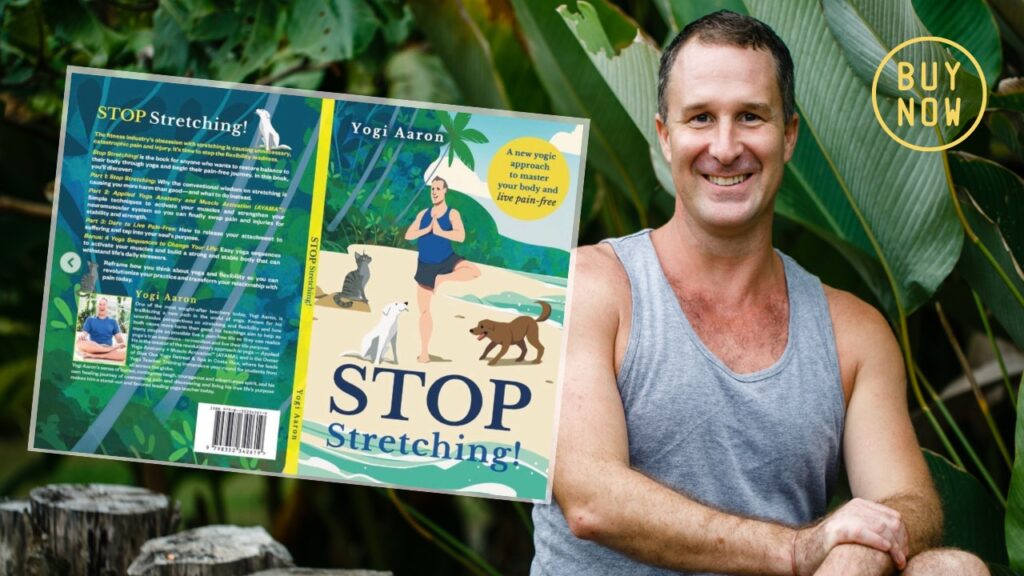Whether you’re an everyday athlete, a fitness enthusiast, or simply someone who wants to feel good in their body, at some point, you might have wondered, How much stretching is too much?
Are my tight hamstrings that big of a deal? Is it really necessary to stretch after every workout? And what about flexibility — can you stretch too much?
First, if you’ve ever asked questions like these, I want to congratulate you for getting curious.
From a young age, we’re taught that stretching is good and muscle tightness is bad. Few people pause to question this logic — myself included.
In fact, for decades, I seriously overstretched, contorting into pretzel-like shapes in the name of fitness and yoga — even when these same exercises caused me debilitating injuries and soul-crushing pain.
So… how much stretching is too much?

Here’s the shocking truth:
All passive stretching is too much stretching.
Contrary to popular belief, stretching has little to no effect on performance or injury prevention…
…but stretching does lead to increased pain and instability in the body.
Let’s take a closer look at the dangers of stretching so we can understand why flexibility is overrated — and what we actually need to do to build strong and stable muscles.
The dangers of stretching: What you need to know
Most people are shocked to discover I’m the “anti-stretch yogi.”
“But don’t yoga and stretching go hand-in-hand?” they inquire.
There are two things I want you to realize:
1. The goal of yoga is to manifest and live our life’s purpose — not to become more flexible.
2. From a biomechanical perspective, stretching causes more harm than good.
It’s time we explore this second point in more detail.
The problem with too much stretching
Do you remember the landline phone, the primary mode of communication before everyone carried a smartphone in their back pocket?
I want you to recall what would happen if this phone line was damaged or cut: communication was disrupted. You could pick up the phone and dial your neighbor’s house all day…
…no one would receive your calls until a technician repaired the line.
Your neuromuscular connection — the connection between your brain and muscles — is much like this phone line.
Your brain must be able to call your muscles to tell them to contract, and your muscles must be able to pick up the phone and respond.
The only problem?
We disrupt our neuromuscular connection when we stretch muscles beyond their natural range of motion. Our brains can no longer get through to specific muscles because the phone line is down.
Stretching incapacitates muscle function — it actually weakens the muscles! And where there is weakness, there is a high opportunity for injury.

Can you stretch too much?
Now, I know some of you are thinking, Okay, but why does stretching disrupt our neuromuscular connection?
To answer this question and better understand how much stretching is too much, we must understand the role of our muscle spindles.
Your muscle spindles are your stretch detectors; they sense whether a muscle is lengthened or shortened.
Think of a coiled Slinky. When we stretch, we unwind the tightly wound slinky structure that is the muscle spindle. This is called unloading.
An unloaded spindle has a drastically diminished ability to receive input from the nervous system. In other words, it doesn’t know whether it should contract or relax.
To re-establish the connection between the brain and the muscle, we must re-coil our muscle spindles. The tighter the Slinky, the more receptive the muscle is to gamma motor neuron input.
Instead of stretching — which has the opposite effect on the spindle — we can improve neuromuscular sensitivity through isometric exercises. We’ll talk about this further in a moment.
There are numerous case studies on the adverse effects of passive stretching on the body; I reference many of them in my book Stop Stretching! For a deeper dive into the latest research on stretching, I suggest you start here.
For now, I’ll share this quote by integrative wellness expert Dr. Stephen Gangemi:
“The thought that stretching relaxes and is therapeutic for tight muscles is not only a misconception; it has never been proven. It actually weakens muscles… Muscle tightness is due to an imbalance. The imbalance lies within the neuromuscular system.”
Dr. Stephen Gangemi
Passive versus dynamic stretching: An important distinction
To understand how much stretching is too much, we must distinguish between passive and dynamic stretching. Let me explain.
Passive stretching
When I talk about stretching, I’m referring to passive stretching. That’s because this tends to be the type of stretching most people are familiar with.
Think: grabbing your toes to pull yourself into a fold forward or grabbing your opposite arm and tugging it across your body.
Anytime we use an external force to elongate muscles and connective tissue past their natural range of motion (like props, bands, or even our body parts), we passively stretch.
Passive stretching uncoils our muscle spindles and disrupts brain-muscle communication — and pain, instability, and tightness are sure to follow.
Dynamic stretching
Unlike passive stretching, when we move the body dynamically, we enhance the muscle’s ability to contract on demand. This improves muscle function and strengthens and stabilizes the body — all very good things.
In dynamic stretching, there is no external force. You are actively moving one muscle group in order to elongate another muscle group.
Dynamic stretching prepares the nervous system for activity. Plus, you don’t risk injuring any muscle tissue since dynamic stretching is self-limiting (no external force).
Let’s take an example.
Picture yourself lying on a yoga mat. You loop a strap around your leg and use the strap to lift your leg as high as it will go. This is a passive stretch — it forces your hamstring to elongate past its natural range of motion.
Now imagine you ditch the strap. Instead, you bring your leg up and hold it at its natural range of motion. The leg might not get as straight or go as far, but the muscles remain active and engaged, and the body becomes stronger and more stable.

AYAMA™: A safe and proven alternative to stretching
So if the answer to How much stretching is too much is any and all passive stretching…
…then what should we do to build strong and stable bodies?
To live healthy, mobile, pain-free lives, we must focus on function over form — on activating and strengthening the muscles. In doing so, we equip our bodies to handle life’s daily stressors and reduce and even eliminate pain.
That’s precisely why I created Applied Yoga Anatomy and Muscle Activation™ (AYAMA).
AYAMA is my proven process to reestablish neuromuscular connections so your brain and muscles can communicate effectively.
AYAMA reduces pain and risk of injury while increasing range of motion, muscle strength, stability, and alignment.
Most importantly, AYAMA allows you to fully enjoy the activities that bring you joy and purpose — without ever worrying about frustrating neck, back, or knee pain ever again.
To my knowledge, no one else is applying this game-changing methodology to the yoga industry.
A deep dive into AYAMA is beyond the scope of this article on how much stretching is too much.
However, if you’re ready to flip the script on flexibility — and finally live the pain-free life you deserve — then I’ve created two resources for you:
1. The book: Stop Stretching!
Reframe how you think about yoga and flexibility so you can revolutionize your yoga practice and transform your relationship with pain today.

In my Amazon bestseller, you’ll learn:
- More about the dangers of stretching (and what to do instead)
- Simple AYAMA techniques to activate your muscles and strengthen your neuromuscular system
- How to transform your relationship to pain so that you can tap into your soul’s purpose
Get your copy of Stop Stretching!
2. The podcast: Stop Stretching

In my new yoga podcast series, I share my journey with pain that led me to ask, Can you overstretch, and how much flexibility do we really need?
Through candid interviews and the latest research, we explore why stretching is causing you more harm than good.
Listen wherever you get your podcasts: Spotify and Apple.
To sum it up
So, how much stretching is too much?
Any passive stretching!
Here’s what I want you to remember:
When muscles are pushed beyond their end range of motion, the neuromuscular connection is disrupted, and the strained muscles can no longer contract on demand. This leads to muscle instability, weakness, and pain.
If you want to build strength, stability, and alignment, don’t stretch or pull the muscles past where they can move on their own. Instead, use dynamic stretching to strengthen and stabilize the body while promoting a full range of motion.
Ready to start living pain-free today?
Learn more about Applied Yoga Anatomy and Muscle Activation (AYAMA).
Want to keep reading? Check out these other popular posts!
- Yoga for Energy: Why Activation Beats Stretching for Real Vitality
- 10-Minute Morning Yoga For Pain-Free Movement And Better Posture
- How to Live Your Life Purpose Pain-Free (No Stretching required!)
- The History of Yoga: Unraveling the Journey from Ancient Roots to Modern Practice
- The Dark Side of Yoga Teaching: What Every Instructor Needs to Know

